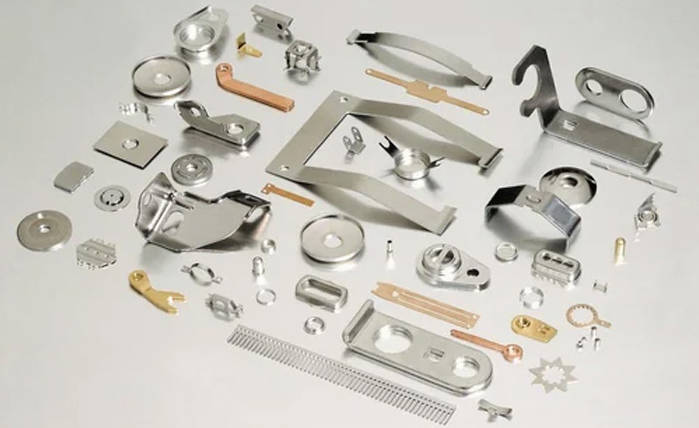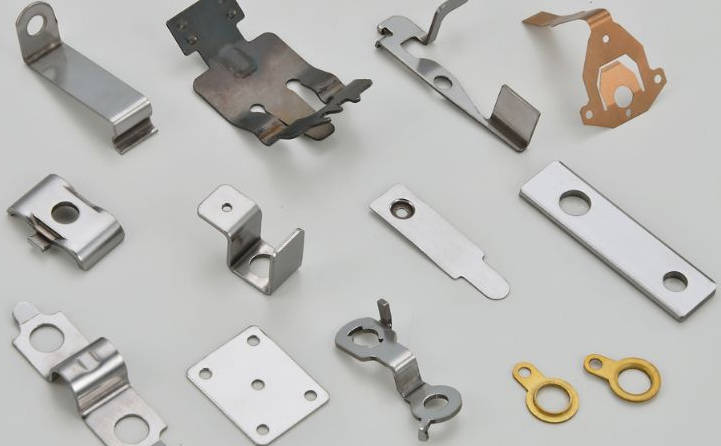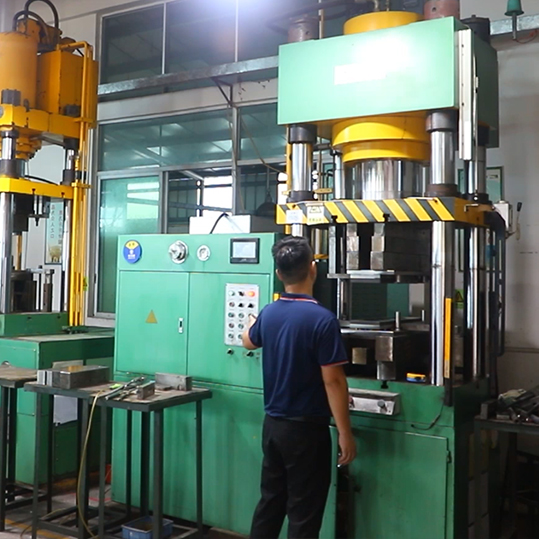I. Introduction
In the intricate world of manufacturing, metal stamping stands as a cornerstone process, transforming flat metal sheets into precise, functional, and often complex components. From the smallest electronic connectors to large automotive body panels, stamped parts are ubiquitous in modern products. However, the success of any stamping project hinges on a foundational decision: the choice of metal. This isn’t merely a matter of cost; it profoundly impacts the part’s performance, durability, manufacturing feasibility, and overall project economics.
For businesses and engineers seeking reliable Metal Stamping Services, understanding the nuances of material selection is paramount. An experienced Metal Stamping factory knows that the right material optimizes production efficiency, minimizes waste, and ensures the final product meets stringent specifications. This guide will delve into the “big three” – Steel, Aluminum, and Copper – providing a comprehensive comparison to help you make an informed decision for your next project.

II. Deep Dive into Material Properties: Steel
Steel, in its myriad forms, remains the undisputed workhorse of the metal stamping industry. Its versatility, robust properties, and often cost-effective nature make it a go-to choice for a vast array of applications.
A. Overview of Steel in Stamping
Steel encompasses a broad family of alloys, primarily iron and carbon, often with other alloying elements like chromium, nickel, and molybdenum. This diverse composition leads to a wide spectrum of properties, categorized broadly into:
- Carbon Steel: The most common type, ranging from low carbon (mild steel) to high carbon, offering various levels of strength and formability.
- Stainless Steel: Known for its corrosion resistance, achieved by a minimum of 10.5% chromium content.
- Alloy Steel: Steels with additional elements to enhance specific properties like strength, hardness, or wear resistance.
B. Key Properties for Stamping
- Strength & Durability: Steel generally boasts high tensile strength, good hardness, and excellent fatigue resistance, making it suitable for structural and load-bearing components.
- Formability: This property varies significantly with the steel grade. Mild steels (e.g., HRPO, CR) offer excellent deep drawing capabilities and are very malleable, ideal for complex shapes. High-strength low-alloy (HSLA) steels are stronger but less formable, requiring careful design and tooling.
- Weldability: Most steel grades exhibit good weldability, enabling easy integration into larger assemblies.
- Cost-Effectiveness: Often the most economical choice per unit weight, especially for high-volume production, contributing to lower overall metal stamping parts cost.
- Corrosion Resistance: Carbon steel requires protective coatings (e.g., painting, plating, galvanizing) to prevent rust. Stainless steel, however, is inherently corrosion-resistant due to its chromium content, making it suitable for harsh environments.
- Density: Relatively high density means steel parts are heavier than comparable aluminum or copper components.
C. Common Steel Types and Their Stamping Relevance
- Mild Steel (e.g., HRPO – Hot Rolled Pickled & Oiled, CR – Cold Rolled):
- Features: Highly formable, weldable, and cost-effective.
- Stamping Relevance: Perfect for general-purpose components, enclosures, brackets, and deep-drawn parts where high strength isn’t critical.
- High-Strength Low-Alloy (HSLA) Steel:
- Features: Significantly higher strength than mild steel with good formability for its strength level, allowing for lighter-gauge parts.
- Stamping Relevance: Utilized in automotive safety components, structural elements, and agricultural machinery where weight reduction and strength are crucial.
- Stainless Steel (e.g., 304, 316, 430):
- Features: Exceptional corrosion resistance, aesthetic appeal, good strength. However, stainless steel is generally harder on tooling and requires more force to stamp compared to mild steel, increasing tooling wear and potentially stamping costs.
- Stamping Relevance: Ideal for food processing equipment, medical instruments, kitchenware, marine applications, and architectural components exposed to weather.
D. Ideal Applications for Steel
Automotive frames and panels, appliance components, structural brackets, consumer goods, furniture, electrical enclosures, and industrial machinery.
III. Deep Dive into Material Properties: Aluminum
Aluminum has emerged as a powerhouse material, especially where weight reduction, corrosion resistance, and specific electrical properties are critical. Its lightweight nature makes it a prime candidate for applications where energy efficiency or portability are paramount.
A. Overview of Aluminum in Stamping
Aluminum alloys are defined by their primary alloying elements, offering a diverse range of properties. For stamping, the most common series are the 1xxx, 3xxx, 5xxx, and 6xxx, with the 5xxx series being particularly popular due to its excellent formability.
B. Key Properties for Stamping
- Weight-to-Strength Ratio: Aluminum’s most celebrated property is its exceptional strength-to-weight ratio, making it ideal for lightweighting applications without compromising structural integrity. This is a significant advantage in industries like automotive and aerospace where fuel efficiency is a driving factor.
- Corrosion Resistance: Aluminum naturally forms a passive oxide layer on its surface, providing excellent inherent corrosion resistance against various environmental conditions. Anodizing can further enhance this property.
- Formability: Many aluminum alloys, particularly those in the 5xxx series (e.g., 5052), exhibit good formability and deep drawing capabilities. However, aluminum work hardens faster than mild steel, requiring careful consideration of forming processes and potentially more intermediate annealing for complex parts.
- Conductivity: Aluminum boasts excellent electrical and thermal conductivity, making it suitable for heat sinks and electrical components.
- Recyclability: Aluminum is highly recyclable, consuming significantly less energy to reprocess than to produce primary aluminum, aligning with sustainability goals.
- Cost: Generally higher per pound than steel, but can lead to cost savings in overall product weight, shipping, and potentially simpler assembly for complex metal parts manufacturing.
- Weldability: Specific aluminum alloys (e.g., 5xxx and 6xxx series) are highly weldable, though some require specialized techniques.
C. Common Aluminum Alloys and Their Stamping Relevance
- 5052 Aluminum:
- Features: Excellent formability, good strength, and superior corrosion resistance, particularly to saltwater.
- Stamping Relevance: Widely regarded as the best general-purpose aluminum alloy for stamping due to its balance of properties. Used for electronic chassis, marine components, pressure vessels, and fuel tanks.
- 6061 Aluminum:
- Features: Stronger than 5052 after heat treatment, good corrosion resistance, and weldability. Less formable than 5052.
- Stamping Relevance: Often chosen when higher strength is paramount, even if it means slightly reduced formability. Commonly found in structural components, bicycle frames, and custom stamped metal parts requiring robust integrity.
D. Ideal Applications for Aluminum
Automotive body panels and structural components, aerospace parts, electronic enclosures, consumer electronics, heat sinks, lighting fixtures, and beverage containers.
IV. Deep Dive into Material Properties: Copper & Copper Alloys
Copper and its alloys are prized for a distinct set of properties, primarily their exceptional electrical and thermal conductivity, coupled with good formability and corrosion resistance.
A. Overview of Copper in Stamping
Beyond pure copper, this category includes:
- Brass: An alloy of copper and zinc, offering a balance of strength, formability, and good conductivity.
- Bronze: An alloy of copper, usually with tin, known for its strength and corrosion resistance, though less common for stamping than brass.
B. Key Properties for Stamping
- Electrical & Thermal Conductivity: Copper is renowned for having the highest electrical and thermal conductivity of all common engineering metals, making it indispensable for electrical and heat transfer applications.
- Corrosion Resistance: Excellent resistance to corrosion, especially in non-oxidizing environments, and good resistance to saltwater.
- Formability: Pure copper is exceptionally ductile and highly formable. Many brass alloys also exhibit excellent formability, suitable for complex shapes and deep drawing.
- Aesthetics: Copper and its alloys offer appealing aesthetic qualities, often used for decorative or visible components.
- Cost: Generally significantly higher than both steel and aluminum, which can be a limiting factor for large parts or budget-sensitive projects.
- Strength: Typically lower in strength than steel or many aluminum alloys, limiting its use in high-load structural applications.
C. Common Copper Types and Their Stamping Relevance
- Pure Copper (e.g., C11000 ETP Copper):
- Features: Highest conductivity, superior formability.
- Stamping Relevance: Ideal for busbars, electrical terminals, gaskets, and heat exchangers where maximum conductivity and ductility are required.
- Brass (e.g., C260 – Cartridge Brass, C272 – Yellow Brass):
- Features: Good combination of strength, formability, and conductivity; excellent for cold working.
- Stamping Relevance: A staple for electrical connectors, switches, plumbing fittings, ammunition components, and decorative hardware. It’s a versatile choice for precision metal stamping due to its consistent properties.
D. Ideal Applications for Copper & Copper Alloys
Electrical connectors, terminals, relays, heat sinks, busbars, shielding, plumbing components, decorative hardware, and musical instruments.
V. Comparative Analysis: Steel vs. Aluminum vs. Copper
Choosing the right material is a balancing act, weighing various properties against project requirements. The following table provides a quick comparative overview:
| Property | Steel (General) | Aluminum (General) | Copper (General) |
| Relative Material Cost | Low to Moderate | Moderate to High | High |
| Strength-to-Weight Ratio | Moderate | Excellent | Low |
| Formability | Good (varies by grade) | Good (varies by alloy) | Excellent |
| Corrosion Resistance | Requires coating (carbon), Excellent (stainless) | Excellent | Excellent |
| Electrical Conductivity | Poor | Good | Excellent |
| Thermal Conductivity | Moderate | Good | Excellent |
| Weldability | Good | Good (alloy dependent) | Good |
| Typical Applications | Auto, structural, appliances | Auto, aerospace, electronics | Electrical, plumbing, decorative |
| Density | High | Low | High |
B. Trade-offs and Considerations
There is no universally “best” material; instead, there is the “most suitable” material for a given application. The optimal choice depends on a careful evaluation of conflicting priorities:
- Do you need maximum strength at the lowest cost (steel)?
- Is weight reduction paramount, even at a higher material cost (aluminum)?
- Are electrical or thermal conductivity the non-negotiable requirements (copper)?
An experienced Metal Stamping factory will guide you through these trade-offs, providing insights into tooling implications and process optimizations for each material.
VI. Key Considerations for Your Stamping Project: Beyond Material Properties
While intrinsic material properties are foundational, several other factors influence the final material choice and the success of your custom metal stamping project.
A. Application Requirements
- Environmental Factors: Will the part be exposed to moisture, harsh chemicals, extreme temperatures, or UV radiation? This dictates the need for inherent corrosion resistance or specific coatings.
- Structural Loads: How much stress and strain will the part endure? This determines required tensile strength, yield strength, and fatigue resistance.
- Functionality: Is the part primarily for electrical conduction, heat dissipation, sealing, shielding, or aesthetic appeal?
- Industry Standards: Does the part need to comply with specific industry regulations (e.g., medical, aerospace, automotive)?
B. Budget & Volume
- Material Cost vs. Total Part Cost: A lower material cost for steel might be offset by higher processing costs or finishing requirements, while a higher cost for aluminum might be justified by weight savings in shipping or assembly.
- Tooling Costs: Some materials, particularly harder ones like certain stainless steels or high-strength aluminum, can increase tooling wear, leading to higher maintenance or replacement costs for precision metal stamping dies.
- Production Volume: For high-volume projects, even small per-unit material cost differences accumulate significantly.
C. Design Complexity & Tolerances
- Intricate geometries, tight radii, or deep draws may push the limits of a material’s formability, necessitating a more ductile metal or specialized stamping techniques.
- Achieving extremely tight tolerances can be more challenging with certain materials due to springback or variations in material consistency.
D. Secondary Operations
Consider how the chosen metal impacts subsequent processes like welding, plating, painting, heat treating, or assembly. For instance, welding aluminum requires different techniques than welding steel.
E. Lifecycle & Sustainability
The recyclability of the material and its overall environmental impact throughout its lifecycle (from raw material extraction to end-of-life) are increasingly important considerations for modern businesses. Aluminum and copper are highly recyclable, offering a good sustainable profile.
VII. Partnering with a Metal Stamping Service Provider: Your Expert Guide
Navigating the complexities of material selection and metal fabrication requires specialized knowledge. This is where an experienced Metal Stamping factory becomes an invaluable partner.
A. The Value of Expertise
A reputable metal stamping service provider doesn’t just stamp parts; they offer critical insights into Design for Manufacturability (DFM), material selection, and process optimization. They can help you:
- Analyze your part’s function and environment to recommend the most suitable material.
- Predict how different materials will behave during stamping, anticipating potential issues like springback or tearing.
- Optimize your design to account for material properties, reducing waste and improving efficiency.
- Provide cost-effective solutions by balancing material cost with tooling longevity and production efficiency.
B. What We Offer
At KAIYAN, our Metal Stamping Services are built on decades of expertise. We offer:
- Comprehensive material consultation and analysis.
- Advanced tooling design and fabrication optimized for specific materials.
- Precision stamping capabilities for a wide range of metals and alloys.
- Integrated secondary operations, including welding, finishing, and assembly.
- Rigorous quality control to ensure parts meet your exact specifications.
VIII. Conclusion
The choice between steel, aluminum, and copper for your metal stamping project is multifaceted, demanding careful consideration of performance, cost, and manufacturing implications. While steel offers robust strength and cost-effectiveness for many applications, aluminum provides unparalleled lightweighting benefits, and copper excels in electrical and thermal conductivity.
By understanding the unique properties of each material and collaborating with an experienced Metal Stamping factory, you can ensure that your stamped components are not only produced efficiently but also perform optimally throughout their lifecycle. Don’t leave this critical decision to chance. Partner with experts who can guide you through the material selection process, transforming your design into a high-quality, perfectly functional stamped part.






